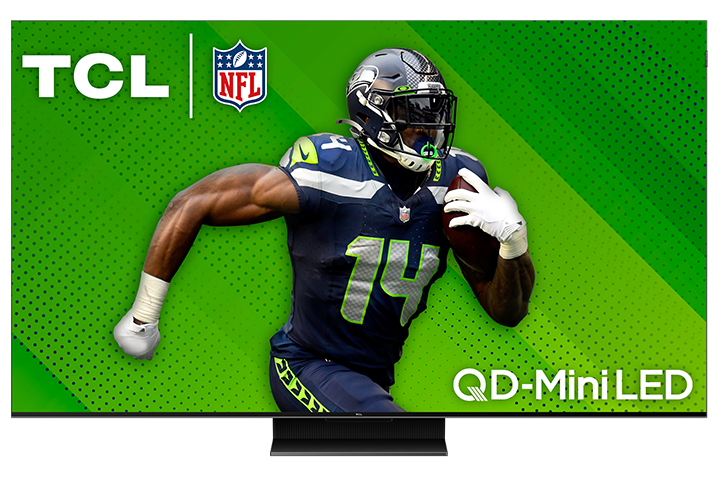There’s a degree of automatic intimidation involved in the television market. Unless you’re comfortable with all the jargon, figuring out which panel is right for you can be a daunting task. Is LCD bad now? What happened to plasma? LED is good, but OLED is better, right? And what the heck is QLED?
Up until recently, I was in the same boat, asking the same questions, and wondering whether I ought to just hang on to my archaic LCD TV. Hey, at least it’s 4K! But over the past year or so, I’ve finally gotten the hang of these tech terms, so allow me to regale you with my thoughts on the TCL 2024 QM7 QLED TV. (What a lovely array of letters and numbers.)
The TCL QM7 comes equipped with a 120Hz panel refresh rate. Put plainly, this is better than the 60Hz panel refresh rate you’ll see on many cheaper panels, and that’s doubly true for gaming. In fact, one of the QM7’s HDMI ports even supports 144Hz “variable refresh rate”, which can be helpful with certain media situations, but for broader purposes, we’ll center on that 120Hz.
A 120Hz refresh rate ensures a level of responsiveness and decreased input lag for PS5 and Xbox Series consoles, as well as gaming PCs, that its lower-number predecessor can’t provide. Right off the bat, I could see the difference between the QM7’s improved capabilities relative to my old 60Hz model. This is one of those things that you’ll quickly grow comfortable with upon upgrading – I was more or less fine with what I had before, but once I hooked my old TV up beside the QM7, it was night-and-day.
When shopping for a new TV, you’ll likely bump into plenty of 60Hz models with snazzy terms like “motion rate 120Hz” and similar fare. Don’t fall for this. There’s no industry standard preventing manufacturers from tossing ‘120’ into their marketing, and it’s false advertising.
Speaking of night-and-day differences, the TCL QM7 supports HDR10+ (basically a more advanced form of HDR) and offers Dolby Vision IQ (which is capable of a greater degree of dynamism in its brightness and contrast shifting). Not every piece of tech you own will tap into these nifty bells and whistles, but if your console collection includes latest-gen consoles, HDR10+ picture quality is brilliant stuff. I also own an Apple TV 4K, and Dolby Vision works spectacularly with it.
I’ve tested everything on my Apple TV 4K from standard-definition 1990s shows via Pluto TV to high-definition streaming on Netflix, Prime Video, Paramount Plus, and Crunchyroll. I’ve also watched the full second season of Star Trek: Strange New Worlds on 4K Blu-ray. Not once did I think that I preferred my old TV set.
Standard Dynamic Range content looks fine enough, which is really all I could ask for – the QM7 doesn’t do anything wonky that makes it worse than it ought to be. Meanwhile, Strange New Worlds looks more crisp than I could have imagined. The Enterprise’s every color pops, fast-paced scenes are never blurry,, and I can appreciate Anson Mount’s amazing hair like never before. Physical media collectors should be more than satisfied.
I’d hazard a guess that the quality of TCL QM7’s dedicated game mode, the entertainingly-titled Game Master, will be a major factor for many of our readers. Game Master is, perhaps, the feature that has impressed me the most. Input lag is virtually nonexistent with it active, which has made me feel like a better Call of Duty: Black Ops 6 player than I actually am. If you’re genuinely competitively capable, you’ll be quite pleased with the response time.
Game Master has several presets, including FPS and RPG. Much of my gaming revolves around role-playing games, so I’ve spent over a dozen hours swapping out FPS to give RPG mode a spin with Dragon Quest 11 and Final Fantasy 7 Rebirth. Thanks to the QM7’s excellent picture quality, it’s not overly saturated, but – more importantly for me – it’s not washed-out at all. It’s lush, it’s vibrant, it’s accurate, and it feels great to play on.
Something to bear in mind if you make the jump to the QM7: the viewing angle isn’t the greatest. If your home presently mandates that folks be seated not just in front of the TV, but far to the sides as well, you’ll want to look into changing things up, or getting a television with a broader viewing angle.
QLED, unlike OLED, isn’t true next-step-forward, game-changingly vivid, TV technology. It’s essentially the most advanced form to date of the LCD TVs that won the head-to-head battle against plasma televisions back in the 2000s. The TCL QM7, as with other QLEDs, has a “quantum-dot filter” set between its LCD screen and LED backlight. This isn’t to disparage QLEDs in any way. The quantum-dot filter dramatically enhances the overall picture – at least, if you’ve got a good QLED TV, which the QM7 certainly qualifies as.
Why not shell out for an OLED instead, then? Predictably, it comes down to the dollar signs. A 55” TCL QM7 will set you back, on average, $999. There are 65”, 75”, 85”, and 98” models; mine’s a 75”, and it retails for $1,999. Contrast this with Sony’s QD-OLED Bravia QR: the 55” model is $2,499. Their 77” bad boy? $4,999.
If you’ve got that sort of spending power, then, by all means, grab an OLED. Most folks I know wouldn’t drop five grand on a TV, especially not when something like TCL’s QM7 exists, which might not offer revolutionary picture quality, but most consumers should be plenty pleased – myself included.

Next
Secretlab Titan Evo NanoGen Edition Chair Review
The Secretlab Titan Evo NanoGen Edition offers luxury and comfort in a sleek package.















Leave a Reply